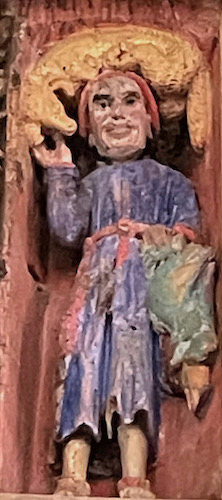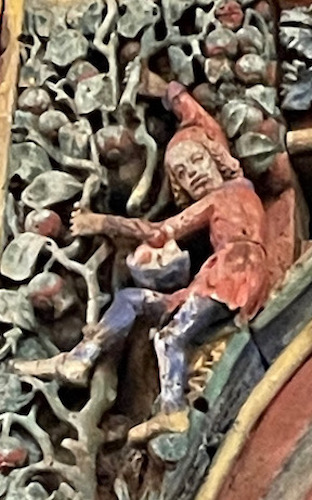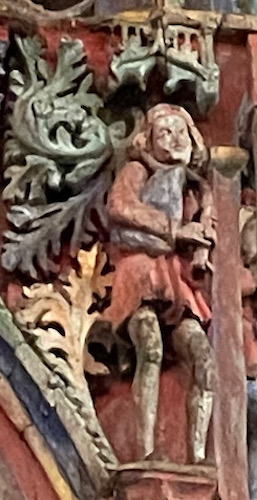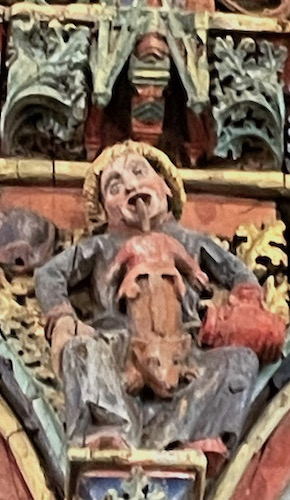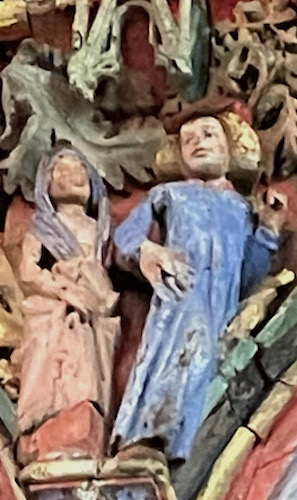Our Blog - Le Faouët, France
The town of Le Faouët has just under 3,000 people and is another little town which seems to be slowly declining in population. We only visited a few places here, both churches.
The first stop was the Chapelle Sainte-Barbe du Faouët. It sits 178 meters above sea level on a platform on the side of the cliff of Roc'h ar marc'h bran (literally the "rock of the raven horse"). It was built from the 16th century to the 18th century, the main works being carried out from 1489 to 1512. According to local legend, a local lord got caught in a storm and promised to build a place of worship for Saint Barbara if he escaped unharmed. He did, and the following day, he bought the land and started the construction. Sainte Barbara was born in current-day Turkey in the 3rd century to a pagan family. She became Christian, which angered her father, who locked her in a tower and tortured her, attempting to make her renounce her faith. But she kept being healed and so in 235, her father beheaded her. She is associated with lightning since shortly after killing her, her father was killed by a bolt of lightning.
At the top, there is a campanile that houses the pilgrims' bell which, according to local legend, scares away lightning. Traditionally, each pilgrim rings it upon arrival in order to attract the blessings of heaven, but many visitors also have fun trying to ring the 440 kg bell.
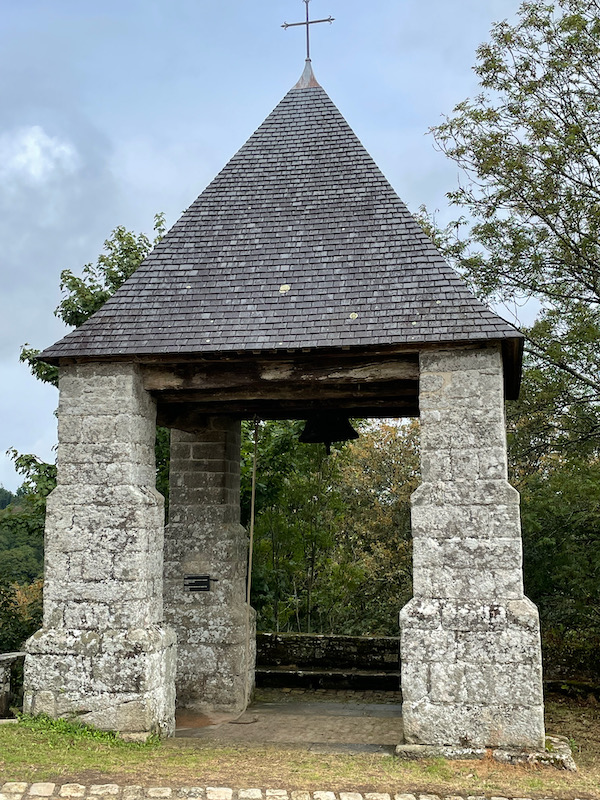
Here you can see the staircase going down to the church and a few nice pictures (I think) of the gargoyles and spires. The staircase itself was done in 1700, decorated with a Louis XIII-style balustrade.
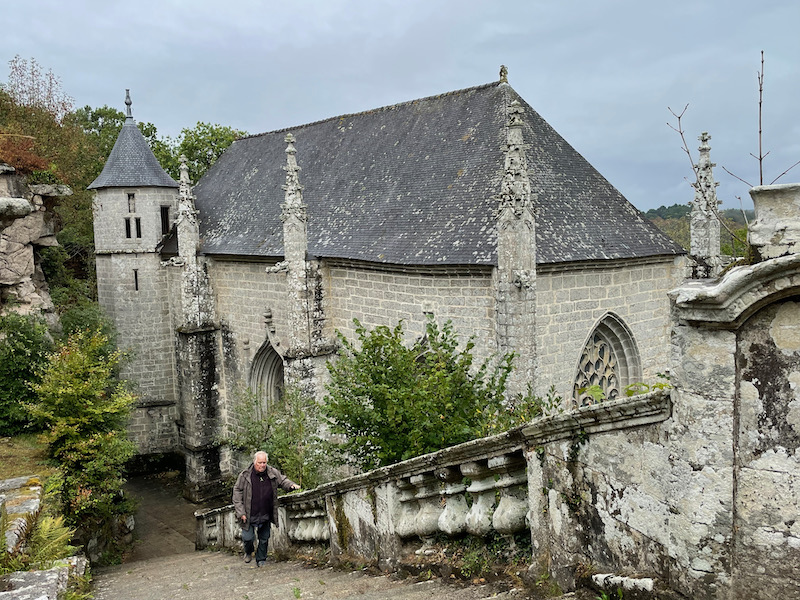
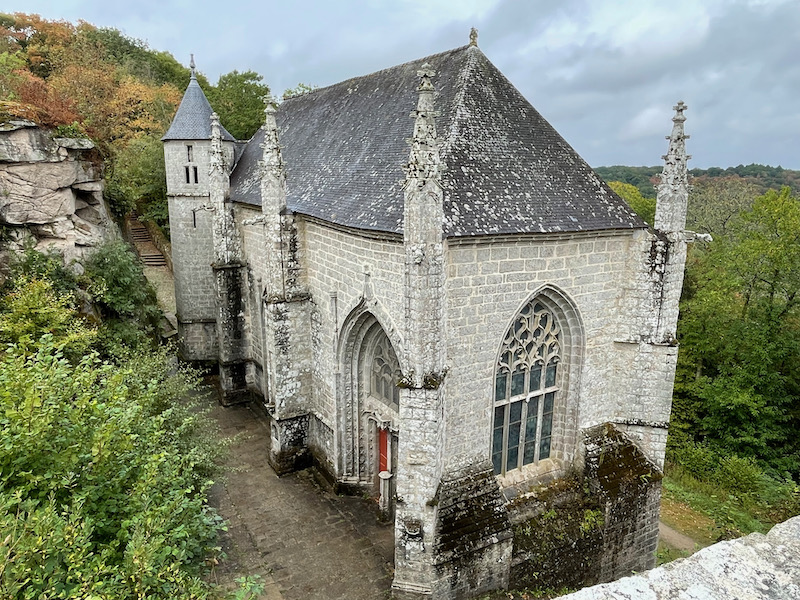
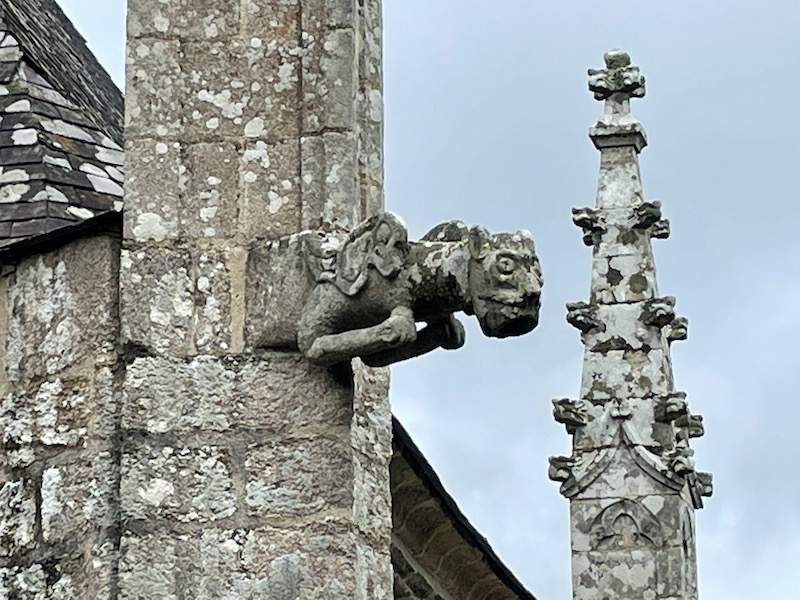
Down at the church level, you can see that it is a fairly tall church (compared to Tom walking next to it).
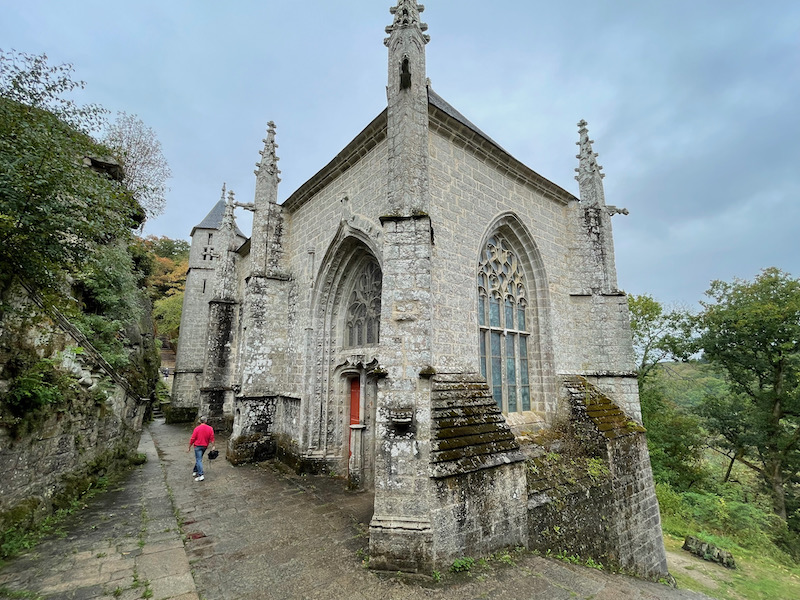
However, it is also quite narrow, since it literally sits on a small sliver of land next to a cliff. You can clearly see the Gothic pointed arches and they keystone. In this first picture, you can make out the red color on the ceiling of the apse, to the right, and the 3rd picture is a close-up.
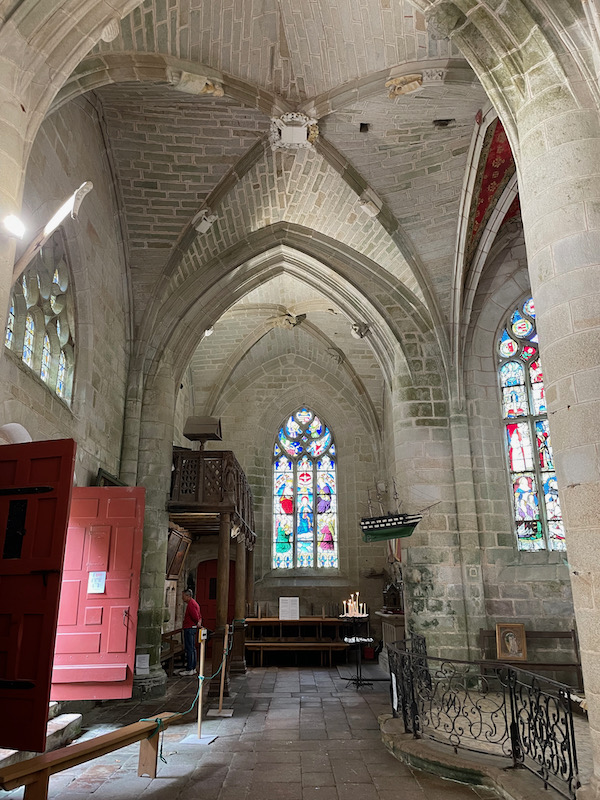
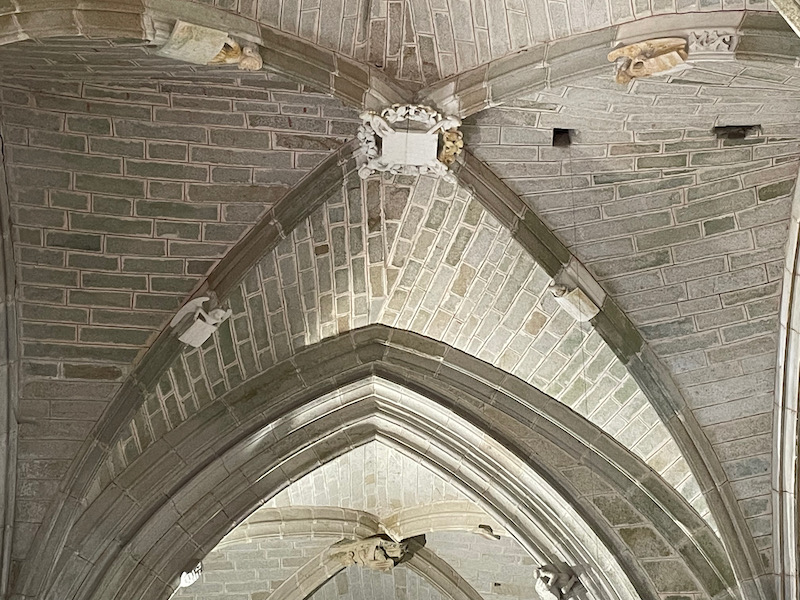
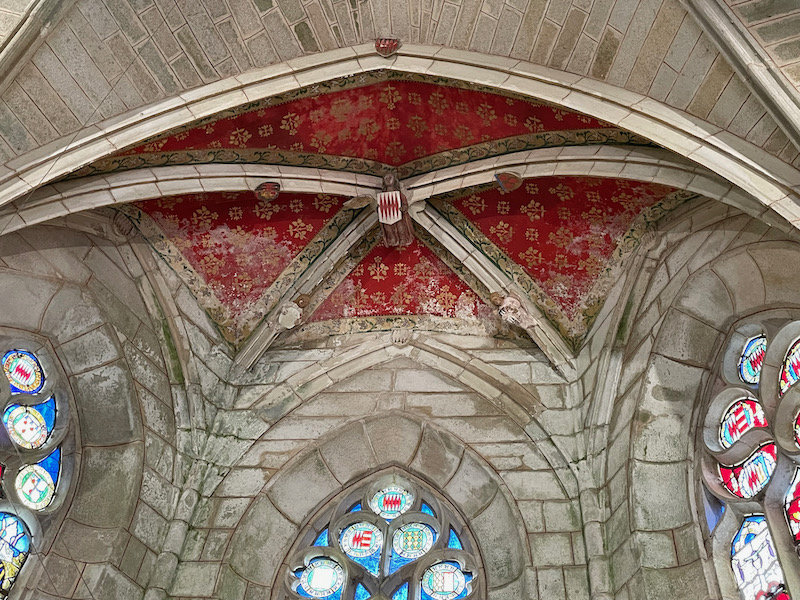
There is a carved wood upper gallery and I got a couple pictures of the nice statues on the front.
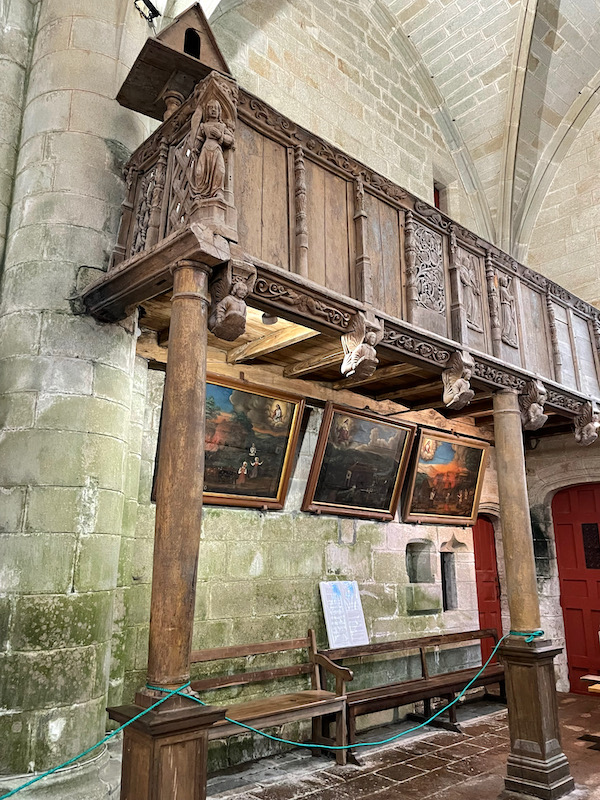
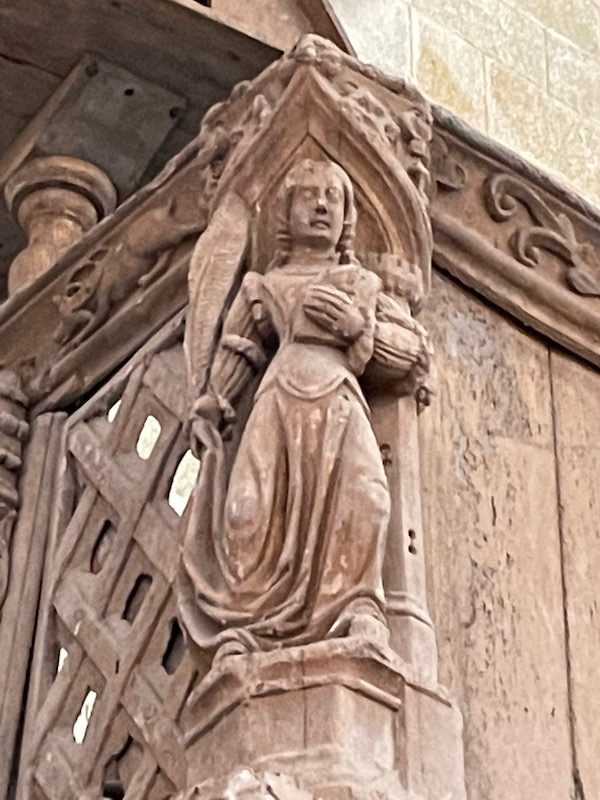
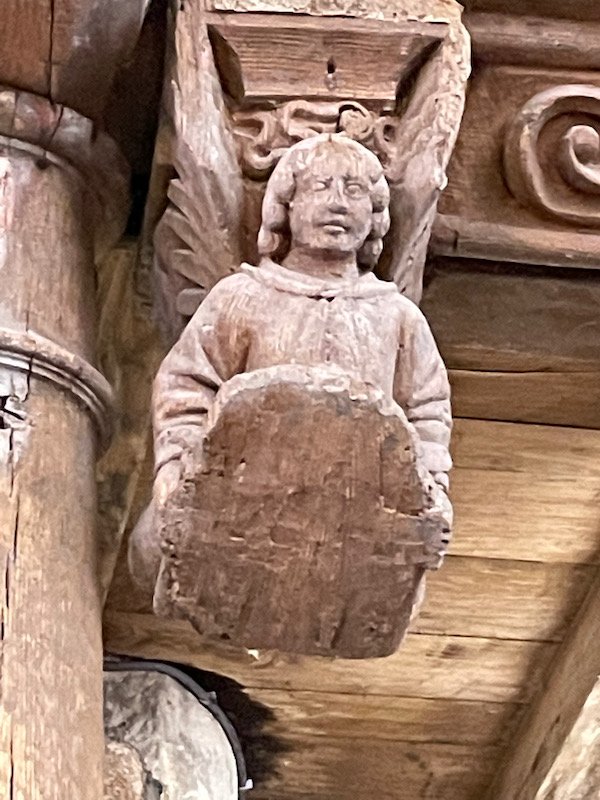
The first stained-glass window dates from 1884 and is called the "scenes of thunderbolts", showing scenes of life around the area. If you look closely, the bottom-left window has a child being taken away by flood waters while her mother prays. I think these last two are some of the windows that date from the 16th century.
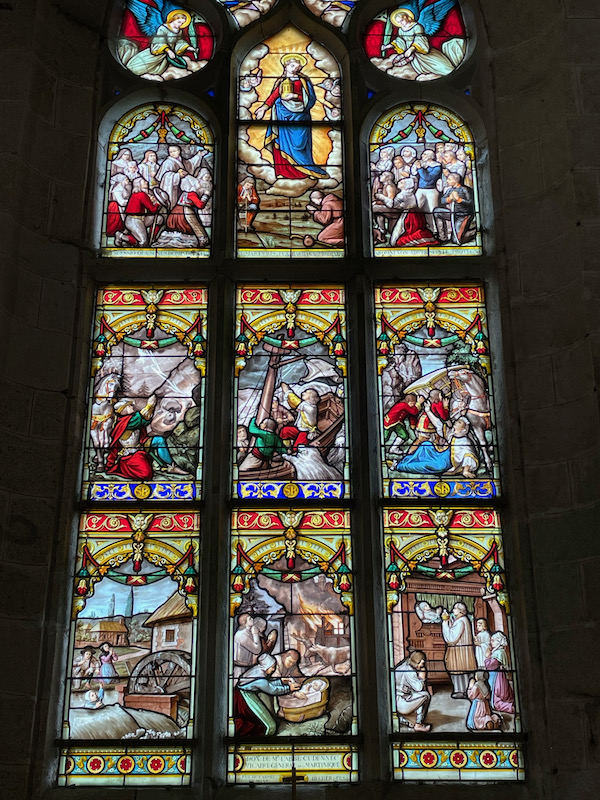
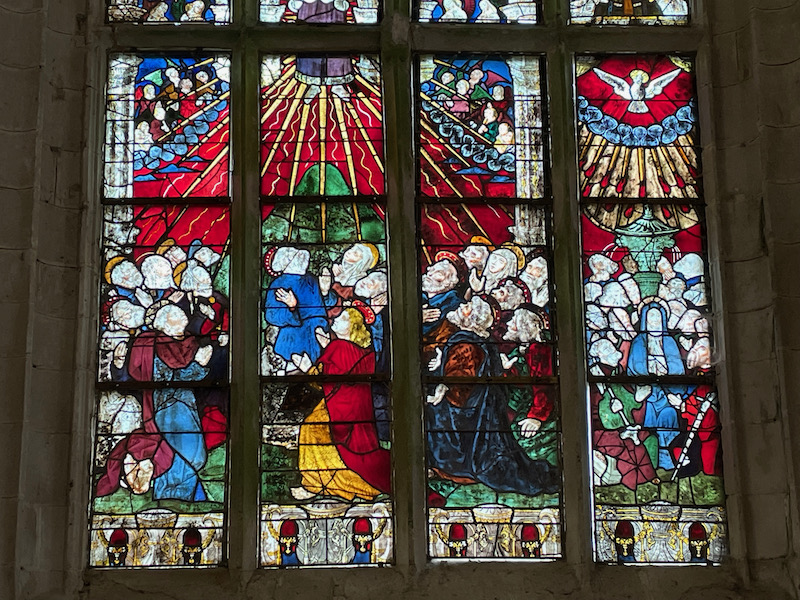
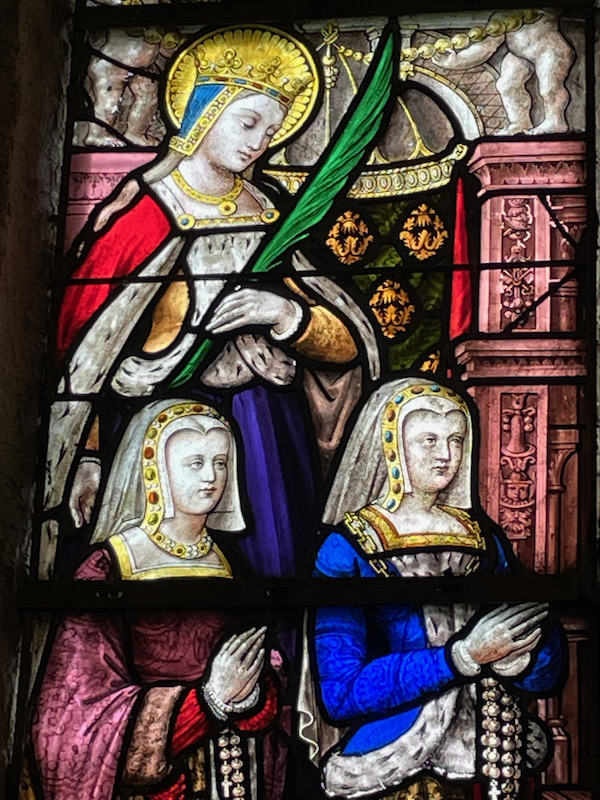
The second church is the Chapel of Saint Fiacre, and is by far the more impressive one. It was built around 1450 and is famous for its wooden rood screen. From the outside, it doesn't look all that impressive, and in some cases, looks more like a castle than a church.
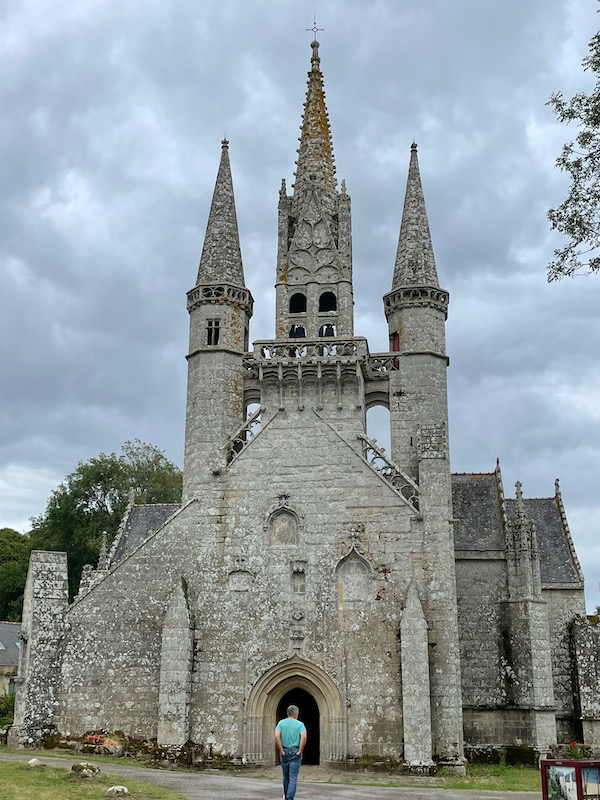
The interior is fairly plain, with the exception of the rood screen. It has a nice inverted-boat painted ceiling with exposed wooden ribs. I also took a picture of one stained-glass window which (I think) has scenes from the life of Saint Fiacre, who is the patron saint of gardeners.
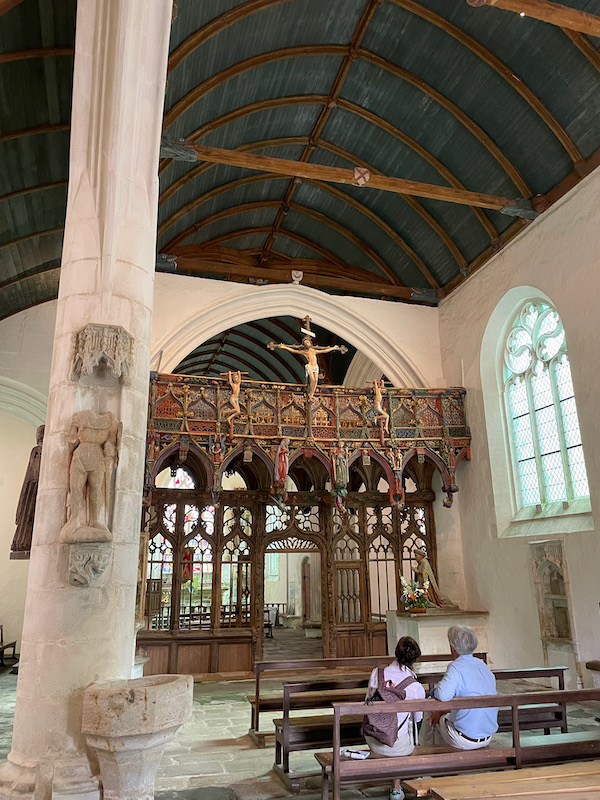
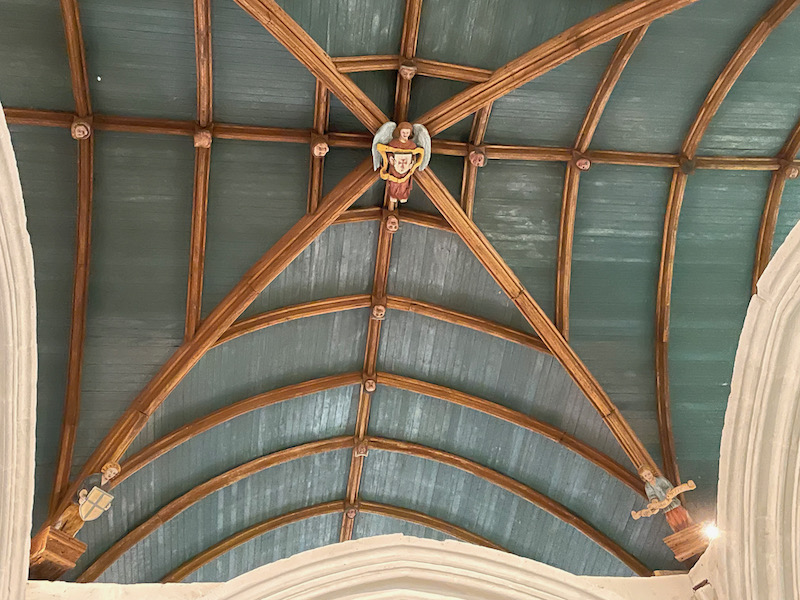
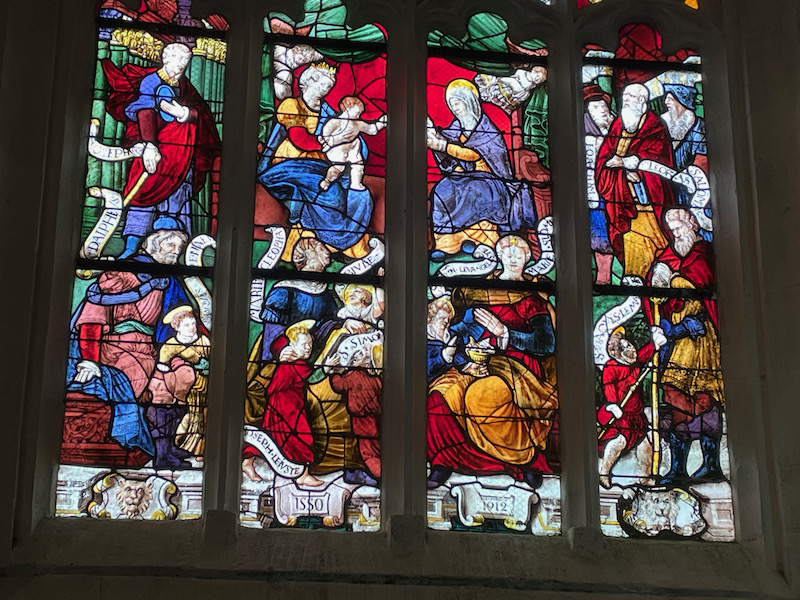
Now the rood screen, which was carved in 1480 and is one of the finest in Brittany. It would have initially been just wood, then painted in the 17th century. It was repainted in 1866 and then went through an extensive cleaning in 2001. What is unique about this one is that the representation on the two sides is different. This is the nave side, so it was facing people who (in general) could not read. It shows scenes that represent the life of Jesus Christ, the Redemption, and symbols of faith. At the top is the Crucifixion, with the person on the left asking for forgiveness and the one on the right showing a grimace on his face.
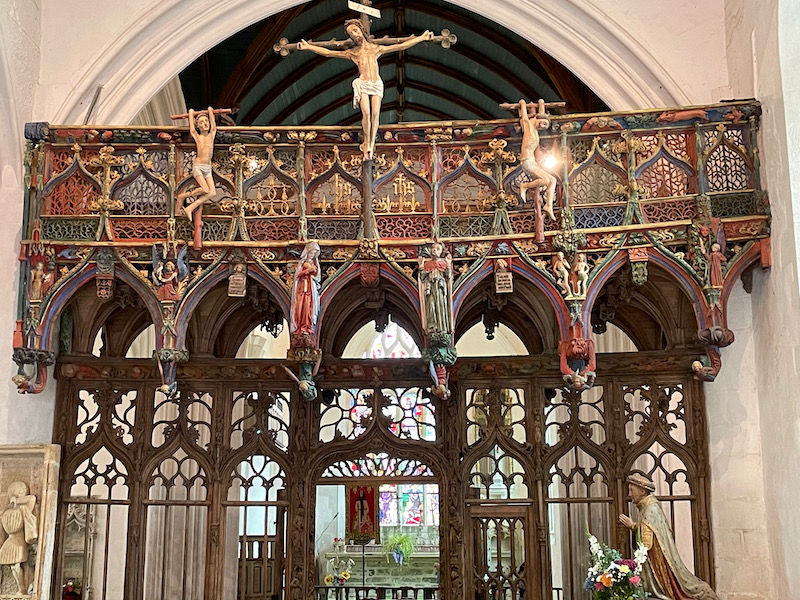
Then below we see various scenes from the bible, including Adam and Eve and an angel chasing them from the Garden of Eden, holding a sword.
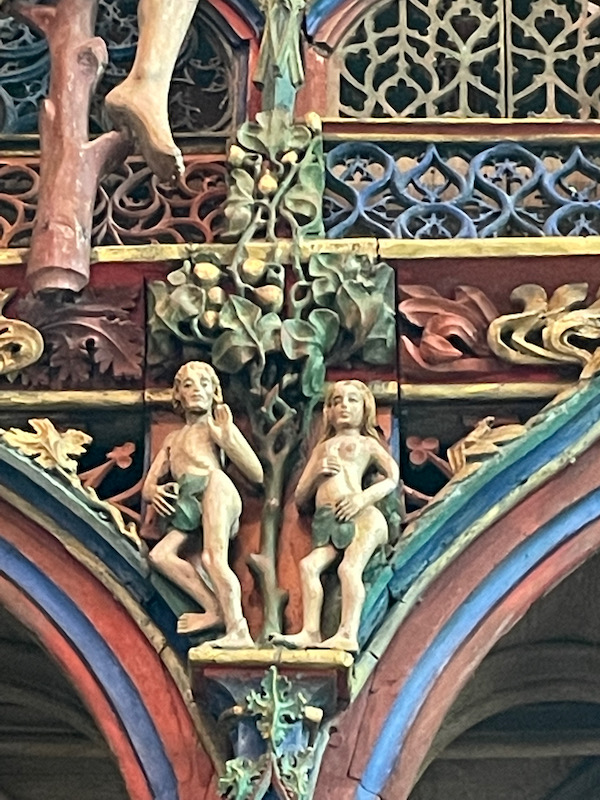
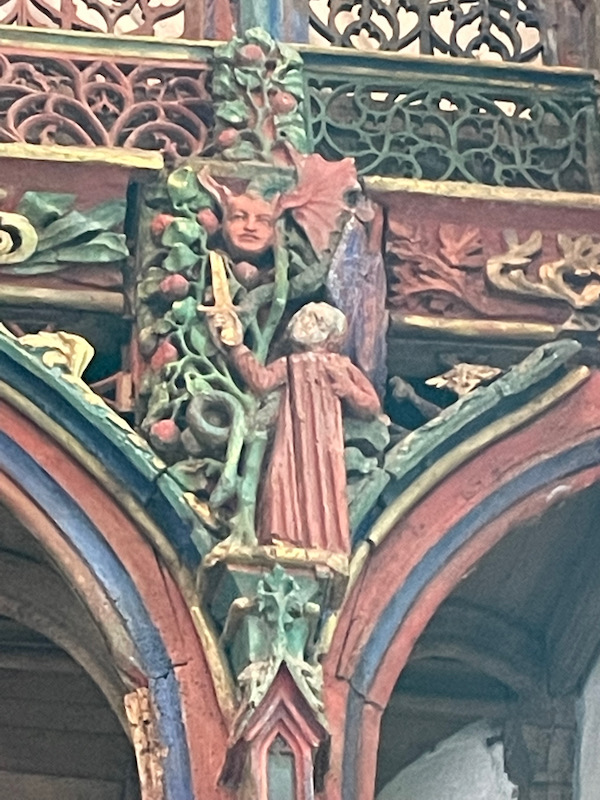
The other side of the rood screen is quite different and it would have been seen by the celebrants of the mass. It shows scenes of daily life that were meant to evoke the seven deadly sins in order to remind those individuals about the vices that they may fall victim to.
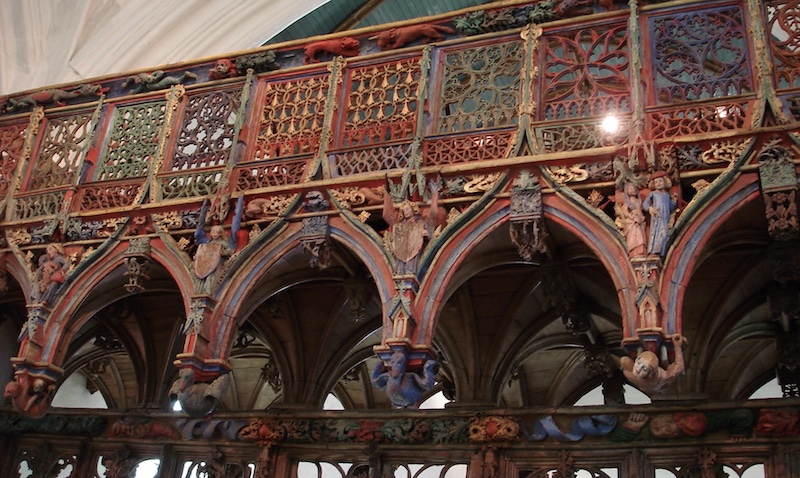
These include Pride (showing a hunter carrying a sheep and a duck), Theft (a young man coming down from a tree after having stolen something), Idleness (a musician playing an oboe-like instrument), Drunkenness (a fat man vomiting a fox with a barrel on his knees), and Lechery (a pair of lovers).
